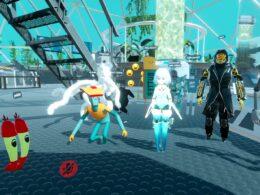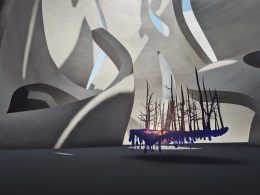Some people report leaving their bodies after a life-threatening situation. A virtual reality simulation is intended to make a near-death experience possible for everyone.
Using VR glasses and spatial sound, the Dutch designer manipulates Frank Kolkman The test subjects' senses in such a way that they have the impression of being outside their own bodies.
Complex machine with robot head
He developed a complex machine for the endeavour: the user wearing VR glasses stands with their back to a robot head that has cameras instead of eyes and spatial sound microphones in its ears.
The cameras stream a stereoscopic 3D live stream into the user's VR glasses so that they can look at their own back. The head movements of the VR headset wearer are transmitted to the robot head in real time.
Look at your own body and come back to it
The audiovisual mix hacks the user's senses of location and gives them the impression of being outside their own body.
The robot head then slowly moves away from the VR headset wearer on a roller track and then moves back again to simulate a return. A small hammer hits the user's chest from the outside and the signal simulates the slowing and accelerating heartbeat.
Kolkman installed a small mirror at the end of the track. When the user looks into it, they see themselves in the shape of the robot and outside their own body. Although this breaks the immersion, according to Kolkman it makes the experience even more intense, as sense and reason come into conflict.
Reducing fear of death
Kolkman wants to use the VR near-death simulator to initiate a debate about living and dying in hospital. The artist believes that medicine places too much emphasis on keeping sick people alive instead of allowing them to fully enjoy the time they have left to live.
"Fear of death is a neglected topic," says Kolkman. "If we treat our fear of death, then the process of dying could become more pleasant."
The effect of his art project on the psyche is to be scientifically analysed in a next step. Kolkman claims that his installation has a more intense effect with each subsequent attempt.
Source: Vrodo









